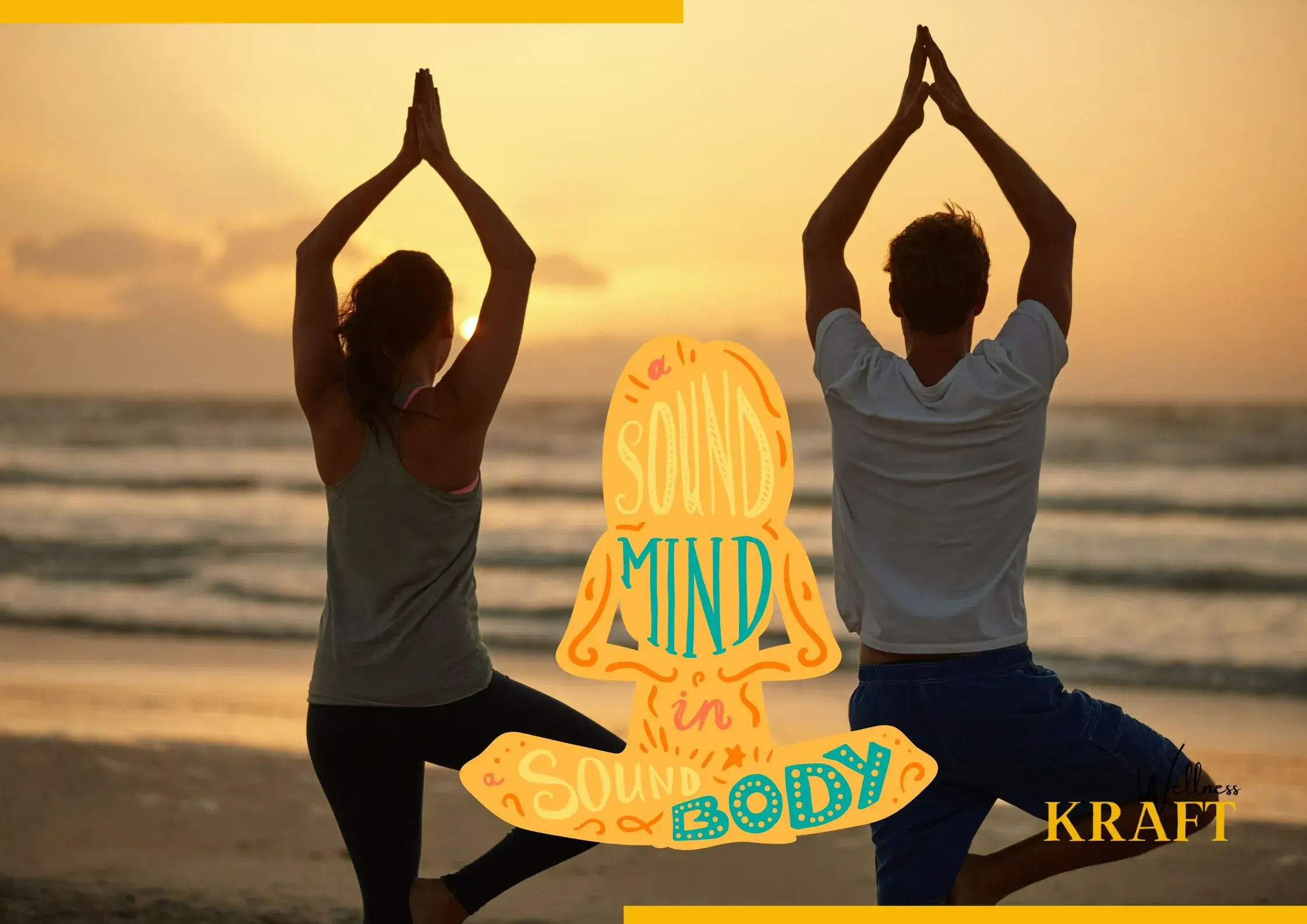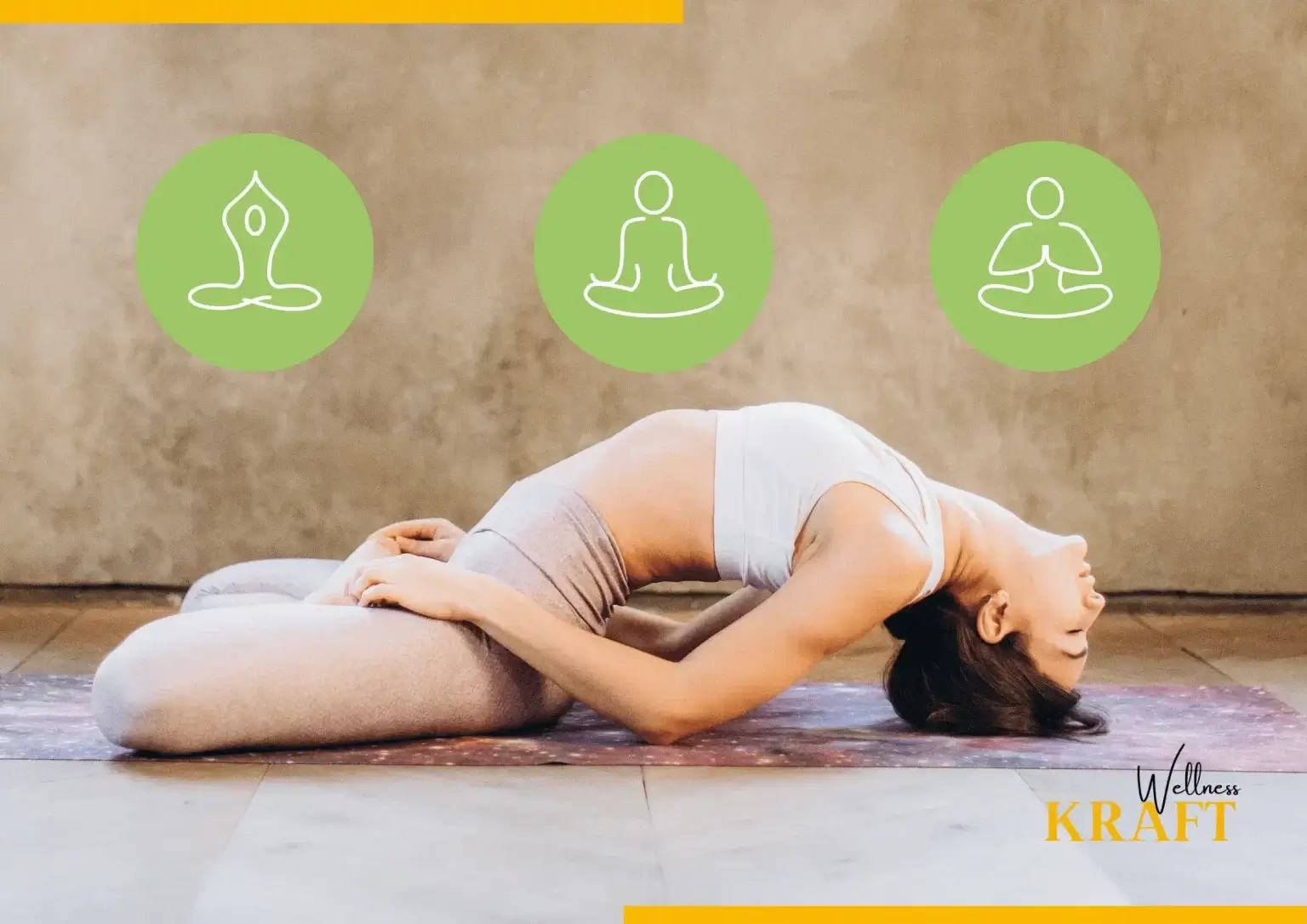“Practicing mindfulness combined with Exercise during each step and rep can enhance your mind-body connection.” – Wellness Kraft
Table of Contents
Introduction
Many of us live hectic lives in the fast-paced world of today, juggling duties to our families, jobs, and social circles. It’s easy to get caught up in the confusion and forget to be in the now. At this point, mindfulness is useful. What you know here is important. Being completely present and absorbed in the moment without passing judgement or straying from one’s course is the practice of mindfulness.
Our physical and mental well-being depend on exercise. The risk of chronic diseases can be decreased, cardiovascular health can be improved, mood can be improved, and stress can be decreased with regular exercise. The benefits of both practices can be significantly increased by combining exercise and mindfulness.
In this post, we’ll look at the benefits of both individually and how they can be used together to have the most effect. Additionally, we’ll provide some mindful exercises for you to attempt as well as tips for while you’re exercising. You’ll have a better idea of how to incorporate both into your daily routine for optimum health and well-being by the end of this article.
Understanding Mindfulness
Giving your undivided attention to the here and now is mindfulness. It entails being present with your thoughts, feelings, and physical experiences without distraction or judgement. Although it has its roots in ancient Buddhist practices, mindfulness is now widely used as a method of lowering stress, anxiety, and depression as well as enhancing general wellbeing.
Developing a nonjudgmental awareness of your thoughts, feelings, and experiences is at the heart of mindfulness. This entails remaining aware of your feelings and ideas while avoiding getting caught up in them or labelling them as positive or negative. You might start to identify recurring patterns and bad habits that can cause tension or other unpleasant feelings by being more conscious of your inner experience.
Meditation, breathing exercises, and body scan techniques are just a few of the methods that can be used to practice mindfulness. You may increase your self-awareness, lessen tension and anxiety, focus more clearly, and make wiser judgements with the aid of these techniques.
Acceptance is one of the main tenets of mindfulness. To accept something as it is without attempting to alter it or judge it. You can learn to let go of unfavorable thoughts and feelings and concentrate on the here and now by engaging in acceptance practices.
Overall, it is an effective method for enhancing one’s mental and emotional health. It can aid in your everyday efforts to build a stronger sense of contentment, fulfilment, and tranquilly.
Benefits of Mindfulness
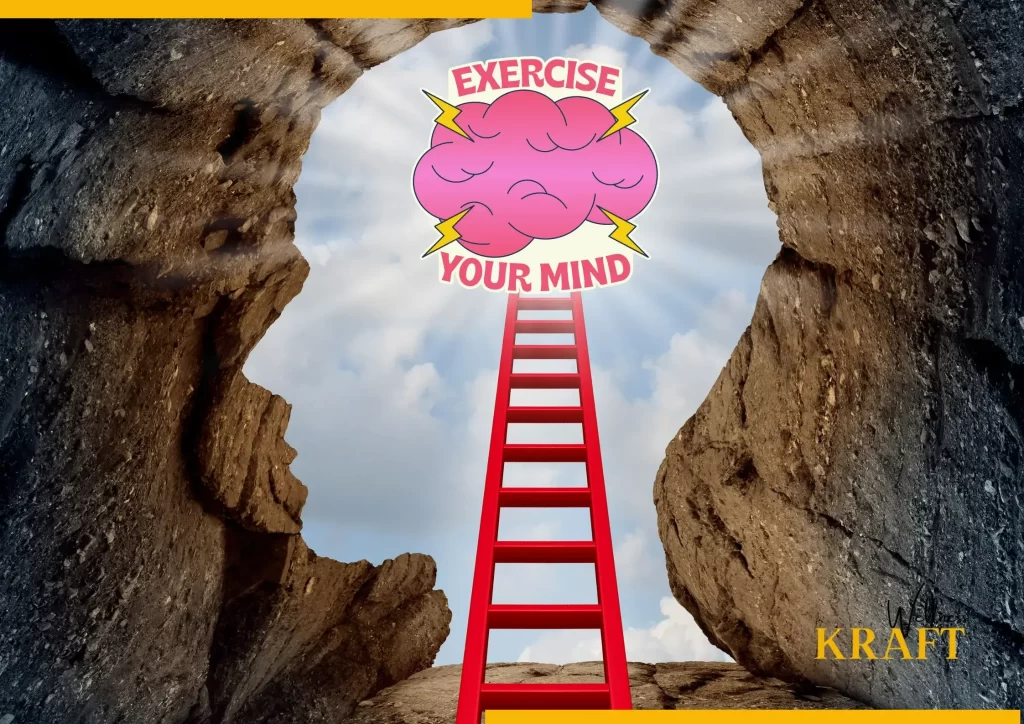
The benefits of mindfulness practice are numerous. According to research, it helps lessen stress, anxiety, despair, and persistent pain. Additionally, it can strengthen immunity, enhance general wellbeing, and improve the quality of sleep. Some of the main benefits are as follows:
1. Reduced stress:
By teaching you to examine your thoughts and emotions without passing judgement, mindfulness can help you manage stress. You may be able to respond to pressure more effectively and serenely as a result of this.
2. Increased focus:
By teaching your brain to remain present in the moment, mindfulness can increase your capacity for concentration and attention. For those who struggle with ADHD or other attention-related issues, this can be especially beneficial.
3. Self-awareness:
Self-awareness is improved thanks to mindfulness, which can give you a clearer understanding of your emotions, ideas, and actions. This might assist you in identifying patterns and behaviours that might be preventing you from accomplishing your goals.
4. Better decision-making:
Mindfulness can improve your decision-making in all spheres of your life by fostering increased self-awareness and lowering stress.
5. Better relationships:
Being present and attentive in your dealings with others can be facilitated by mindfulness. Relationships that are more meaningful and fulfilling may result from this.
6. Compassion:
You can grow your compassion for others and yourself by practicing mindfulness. Increased feelings of kindness and empathy may result from this.
7. Enhanced well-being:
Mindfulness has been shown to improve general wellbeing and quality of life by lowering stress, enhancing sleep, and boosting immunity.
Overall, mindfulness is a potent tool for enhancing physical, mental, and emotional well-being. You can gain a variety of benefits that can improve your general quality of life by adding mindfulness to your regular activities.
Benefits of Regular Exercise

The benefits of regular exercise for both physical and mental health are numerous. Some of the main benefits of exercise include:
1. Increased physical health:
Exercise can help strengthen bones and muscles, enhance balance, and increase flexibility. Additionally, it can aid in lowering the chance of developing chronic illnesses like obesity, diabetes, and heart disease.
2. Weight management:
By burning calories and boosting metabolism, exercise can help you achieve and maintain a healthy weight.
3. Improves Physical health:
Exercise can help lower the chance of developing chronic conditions like diabetes, heart disease, stroke, and some types of cancer.
4. Improved mental health:
Exercise can help lift your spirits, lessen stress and sadness, and improve your general state of mind. Additionally, it can aid in lowering the risk of dementia and cognitive decline.
5. Increase energy:
By enhancing blood circulation and oxygen delivery throughout the body, exercise can help increase energy levels.
6. Better sleep:
By lowering stress, anxiety, and depression, exercise can help you have a better night’s sleep.
7. Increase longevity:
Studies have shown that regular exercise extends life and lowers the risk of dying young.
In general, exercise is crucial to leading a healthy lifestyle. In addition to enhancing the general quality of life, it provides a number of benefits for both physical and mental health. You can benefit from a variety of benefits that can improve your general health and well-being by including regular exercise in your daily routine.
Strategies to Combine Exercise and Mindfulness
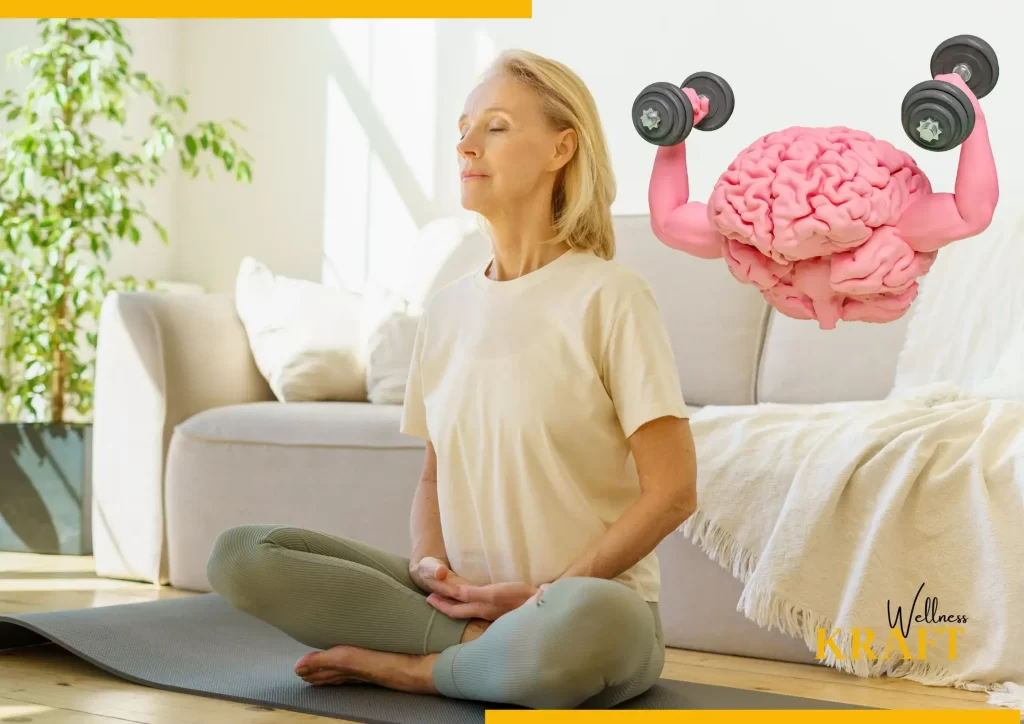
A potent method for improving both physical and mental health is to combine mindfulness and exercise. You can incorporate mindfulness into your exercise routine in the following ways:
1. Pay attention to your breath as you inhale and exhale as you incorporate deep breathing exercises into your training routine. This can facilitate increased relaxation, stress reduction, and attention.
2. Pay close attention to how your body feels when you exercise. This might assist you in locating any tight or uncomfortable regions so that you can modify your motions.
3. Pay attention to the physical sensations of movement, such as the sensation of your muscles contracting and releasing. This could boost the mind-body connection and help with bodily awareness.
4. By paying attention to your breath and the physical sensations of each stride, you may incorporate mindfulness into your daily walking or jogging routine. Focus can be improved, stress can be lessened, and relaxation can be increased.
5. Yoga and meditation are two exercise modalities that include mindfulness techniques. These exercises can help increase balance, flexibility, and strength while lowering stress levels and promoting mental health.
You can increase the physical and mental benefits of both practices by introducing mindfulness into your exercise routine. When you exercise, mindfulness can help you stay present and engaged while also lowering stress levels and promoting relaxation. Combining both can help you attain your best possible physical and mental health with consistent practice.
The benefits of Combining Exercise with Mindfulness

The benefits of combining exercise and mindfulness for physical and mental health can be numerous. Some of the main benefits include:
1. Attention is enhanced:
When you combine both, your attention and concentration are enhanced, enabling you to remain present and concentrated during your workout. This may result in a routine for exercise that is more effective and efficient.
2. Stress reduction:
Studies have shown that exercise and mindfulness can both lower stress levels. Combining these techniques can have a synergistic impact that further reduces stress and encourages relaxation.
3. Increased relaxation:
Adding mindfulness to your exercise routine can aid in body-tension reduction and relaxation. This may result in increased mental health and general relaxation.
4. Strengthened mind-body connection:
By incorporating mindfulness and exercise, you can strengthen your mind-body connection and gain a greater understanding of your body’s requirements and limitations.
5. Improved sports performance:
By enhancing attention, lowering stress, and increasing relaxation, both can help athletes perform better. This may result in enhanced physical performance and post-exercise recovery.
6. Alleviate symptoms of anxiety and depression:
Mental health can be significantly improved by combining both, which can also help to alleviate symptoms of anxiety and depression and improve general wellbeing.
7. Increased self-awareness:
Mindfulness and exercise can both help you get a deeper understanding of your own thoughts, feelings, and physical sensations. This may result in improved decision-making and a greater sense of total self-awareness.
Overall, combining both can significantly improve both physical and mental health. You can maximise the benefits of both practices and reach maximum well-being by including mindfulness practices into your exercise routine.
During Exercise, Some Tips on How to Practice Mindfulness

You may improve your mind-body connection, stay present, and reduce stress by practicing mindfulness while you exercise. To incorporate mindfulness into your exercise routine, follow these tips:
1. Start your exercise routine with a mindful warm-up by stretching and breathing mindfully. This can aid in your relaxation and mental and physical preparation for the upcoming workout.
2. Keep your attention on your body’s physical sensations when you exercise, such as the sensation of your muscles clenching and releasing. This could boost the mind-body connection and help with bodily awareness.
3. Focus on your breath throughout exercise, using it as a focus point to stay present and in the moment. This can aid in enhancing focus and lowering stress.
4. Practice mindful movement by paying attention to the feelings of each action and how your body feels as you move. This could boost the mind-body connection and help with bodily awareness.
5. During exercise, try not to let your thoughts wander. Instead, keep your mind on the here and now and allow yourself to totally immerse yourself in the exercise experience.
6. During exercise, employ visualization techniques to help you stay motivated and focused. For instance, you might visualize yourself accomplishing a particular objective or finishing a demanding workout.
7. Express your thankfulness for your body and your capacity to exercise as a practice of gratitude. This can aid in refocusing your thoughts so they are more positive than negative.
You can increase the physical and mental benefits of these practices by including them in your exercise routine. You can achieve your best physical and mental health by incorporating mindfulness into your exercise routine on a daily basis.
Try These Mindful Exercises
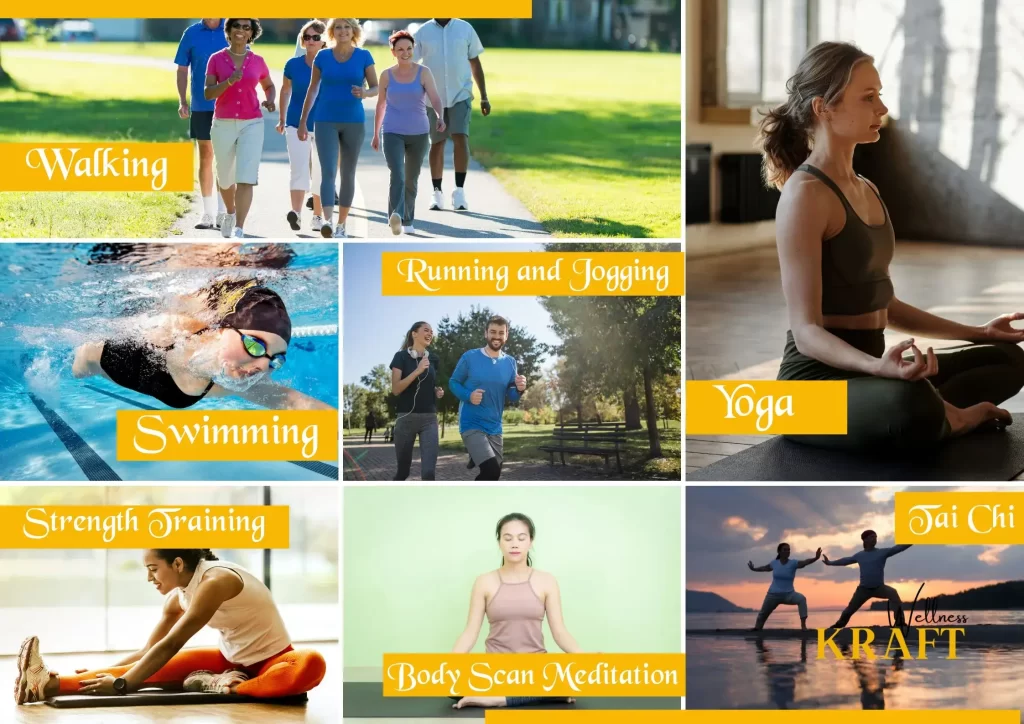
You can attempt a variety of mindful exercises to increase the health benefits of both exercise and mindfulness. To get you started, here are a few:
1. Walking:
Walking meditation entails walking slowly and thoughtfully while paying special attention to your body and breath. As you walk, pay attention to the sensations in your feet and legs and use your breathing as a focal point to stay in the moment and grounded.
2. Yoga:
Yoga is a mindful exercise regimen that incorporates breathing, movement, and meditation. Yoga can aid in relaxation and stress reduction while also enhancing flexibility, strength, and balance.
3. Tai chi:
Tai chi is a gentle martial art that incorporates meditation, deep breathing, and flowing motions. Taijiquan training can enhance one’s flexibility, balance, and calmness.
4. Body Scan Meditation:
Body scan Meditation is lying down and thoroughly examining your body to look for any tension or discomfort. Both relaxation and increased body awareness may result from this.
5. Swimming:
Swimming is a mindful exercise that can help you unwind and concentrate. As you swim, pay attention to how the water feels against your skin and the pattern of your breathing.
6. Running or jogging:
These exercises are excellent for incorporating mindfulness into your exercise routine. As you run, pay attention to the sound of your feet hitting the ground and the pattern of your breath.
7. Strength Training:
Strength training done thoughtfully can help increase body awareness and strengthen the mind-body connection. When performing strength-training exercises, focus on how your body feels and how each movement feels.
You may increase the physical and mental benefits of both by including these exercises in your daily routine. Try out several exercises to see which ones are most effective for you and your physique. In order to completely participate in the experience of mindful exercise, keep your attention on the here and now.
Concluding Thoughts
In conclusion, there are considerable benefits to both physical and mental health when they are combined. While exercise can improve cardiovascular health, build strength and endurance, improve mood and energy levels, and reduce stress and anxiety, mindfulness can help promote total calm. People can increase the benefits of both practices and foster a stronger mind-body connection by engaging in mindful practices while exercising.
As mentioned in Wellness Kraft article, adding mindfulness to exercise routines may be as easy as concentrating on the breath, remaining in the present, and paying attention to the body’s feelings. Exercises that enhance mindful activity, such as yoga, body scan meditation, and walking meditation, can also be very helpful.
It’s crucial to keep in mind that everyone will have a different experience with mindfulness and exercise, and it can take some time to figure out what works best for you. The many physical and mental benefits of this potent combination, however, can be experienced by remaining dedicated to regular practice and adopting mindfulness into your exercise routine. So why not give it a try and discover how both may improve your life?
Key Takeaways
1.Increasing the physical and mental benefits of both practices by incorporating mindfulness and exercise.
2. Mindfulness can enhance bodily awareness, ease anxiety and tension, and encourage relaxation.
3. Exercise can enhance mood and energy levels, increase strength and endurance, and improve cardiovascular health.
4. Body scan meditation, yoga, and other mindful exercises can be useful for incorporating mindfulness into exercise routines.
5. Everyone will have a different experience with exercise and mindfulness, so it could take some time to figure out what is right for you.
FAQs
-
1. Describe mindfulness.
The practice of mindfulness involves being in the present and impartially noticing one’s thoughts, feelings, and experiences.
-
2. What benefits does mindfulness offer?
It can boost mood, decrease stress and anxiety, increase focus and attention, and advance general wellbeing.
-
3. How do we exercise?
Exercise is any repetitive, systematic physical activity done with the aim of enhancing physical fitness.
-
4. What benefits does exercise offer?
Exercise can stimulate weight loss, strengthen the body, and increase endurance. It can also improve moods and energy levels.
-
5. How may exercise and mindfulness be combined?
By adding mindful practices like breathing exercises, body awareness, and meditation into exercise regimens, mindfulness and exercise can be blended.
-
6. Which mindfulness exercises should we try?
Some mindful exercises to attempt are swimming, running or jogging, yoga, tai chi, body scan meditation, and mindful strength training.
-
7. How can practicing mindfulness affect how well you exercise?
By assisting people to remain present, engaged, and motivated during exercises, mindfulness can enhance exercise performance.
-
8. How does mindfulness improve with exercise?
Physical activity helps to increase mindfulness by encouraging physical awareness, lowering stress and anxiety, and enhancing mood and vitality.
-
9. Can exercise and mindfulness aid in weight loss?
By encouraging good habits, lowering stress, and enhancing general physical fitness, can aid in weight loss.
-
10. How frequently should I exercise and practice mindfulness?
Individual needs and goals will affect how frequently you practice . To achieve the most physical and psychological benefits, practicing frequently is advised.
